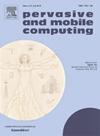基于轨迹预测的车辆网络服务迁移目标选择方法
IF 3.5
3区 计算机科学
Q2 COMPUTER SCIENCE, INFORMATION SYSTEMS
引用次数: 0
摘要
在移动车联网中,边缘服务器为高速行驶的车辆提供服务时,由于服务覆盖范围的限制,服务中断问题尤为突出,严重影响了服务的连续性和质量。针对这一问题,本文提出了一种基于轨迹预测的服务迁移目标选择方法。该方法首先利用TS-LSTM轨迹预测模型预测车辆未来的运动轨迹,识别潜在的活动区域及其相关的边缘服务器;然后,利用深度q -网络(Deep Q-Network, DQN)对目标服务器选择进行优化,将延迟和负载公平性共同纳入优化目标函数。此外,在业务迁移过程中引入预复制技术,确保在业务切换时原服务器仍能继续提供服务,使目标服务器能够无缝接收任务,有效地保证了业务的连续性。实验结果表明,与现有方法相比,该方法在收敛速度、业务延迟和业务稳定性方面具有显著优势:端到端平均业务延迟降低32%,业务拒绝率降低28%。本文章由计算机程序翻译,如有差异,请以英文原文为准。
Trajectory prediction-based migration target selection method for vehicular network services
In mobile vehicular networks, when edge servers (ES) provide services to high-speed moving vehicles, the problem of service interruption is particularly prominent due to the limitation of service coverage, which seriously affects the continuity and quality of services. To solve this problem, this paper proposes a service migration target selection method based on trajectory prediction. The method first predicts the future movement trajectories of vehicles by the TS-LSTM trajectory prediction model to identify potential activity areas and their associated edge servers; then, the target server selection is optimized using Deep Q-Network (DQN), which jointly incorporate delay and load fairness into the optimization objective function. In addition, pre-replication technology is introduced during the service migration process to ensure that the original servers can continue to provide services during the service switchover, allowing the target servers to seamlessly receive tasks, effectively ensuring service continuity. The experimental results show that, compared with the current state-of-the-art, the proposed method has significant advantages in terms of convergence speed, service delay and service stability: the average end-to-end service delay is reduced by 32% and the service rejection rate is reduced by 28%.
求助全文
通过发布文献求助,成功后即可免费获取论文全文。
去求助
来源期刊

Pervasive and Mobile Computing
COMPUTER SCIENCE, INFORMATION SYSTEMS-TELECOMMUNICATIONS
CiteScore
7.70
自引率
2.30%
发文量
80
审稿时长
68 days
期刊介绍:
As envisioned by Mark Weiser as early as 1991, pervasive computing systems and services have truly become integral parts of our daily lives. Tremendous developments in a multitude of technologies ranging from personalized and embedded smart devices (e.g., smartphones, sensors, wearables, IoTs, etc.) to ubiquitous connectivity, via a variety of wireless mobile communications and cognitive networking infrastructures, to advanced computing techniques (including edge, fog and cloud) and user-friendly middleware services and platforms have significantly contributed to the unprecedented advances in pervasive and mobile computing. Cutting-edge applications and paradigms have evolved, such as cyber-physical systems and smart environments (e.g., smart city, smart energy, smart transportation, smart healthcare, etc.) that also involve human in the loop through social interactions and participatory and/or mobile crowd sensing, for example. The goal of pervasive computing systems is to improve human experience and quality of life, without explicit awareness of the underlying communications and computing technologies.
The Pervasive and Mobile Computing Journal (PMC) is a high-impact, peer-reviewed technical journal that publishes high-quality scientific articles spanning theory and practice, and covering all aspects of pervasive and mobile computing and systems.
 求助内容:
求助内容: 应助结果提醒方式:
应助结果提醒方式:


